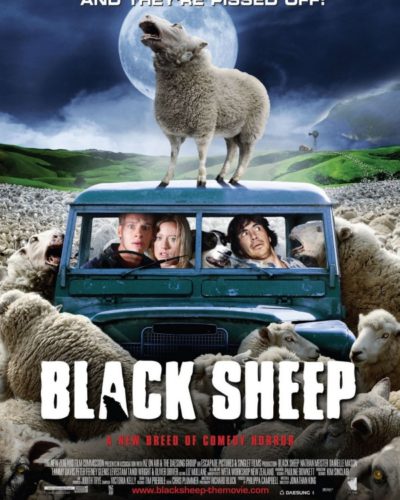Whispers in the Shadows: The Ghosts of “The Abandoned”
In a genre where the derelict and the macabre reign supreme, “The Abandoned,” directed by Nacho Cerdà, is a film that indelibly etches itself upon the canvas of psychological horror. Released in 2006, this movie entangles its viewers within a cobweb of eerie desolation, often leaving them to whisper like its forlorn protagonist, “I feel like this place wants to hurt me.” In a brief, spoiler-free description, “The Abandoned” follows Marie, a film producer, who inherits her family’s long-abandoned farm in Russia, only to be confronted with unexplainable phenomena and deeply unsettling family secrets that blur the line between life and death.
Through A Broken Mirror: Crafting Terror In Atmosphere and Tone
The horror ambiance of “The Abandoned” is cultivated like a slow-growing ivy, its tendrils wrapping around the viewer with an ever-tightening grip. Cerdà’s mastery in cultivating an ominous tone is largely attributable to his commitment to suspense and dread over gratuitous gore. Moments of silence stretch into an eternity, and each shadow cast across the decrepit farmhouse seems to hide unspeakable horrors.
The film’s tension is a creature born of patience. Each corner of the screen is pregnant with a lurking threat, a lingering shot that suggests something just beyond the frame. Cerdà is not hurried in his approach to fear, preferring instead to let the anxiety simmer until it reaches a boiling point.
In the Gloom: A Symphony of Shadows and Whispers
The cinematography in “The Abandoned” can be likened to a chilling ballet performed in the gloom. The use of lighting – often natural, diffused, and haunting – cultivates a patina of decay that is both repellent and mesmerizing. The color palette is dreary, swathed in grays and earthen tones that make the bloodstains on walls or the sudden flash of a ghostly figure all the more arresting.
Unique camera angles and a roving, unsettled lens contribute to the uncanny environment Cerdà creates. Visual techniques, such as the mirroring of images and the disorienting use of space, are smartly employed to evoke a sense of the supernatural without resorting to cliché.
Furthermore, the soundtrack and sound effects are meticulous in their understatement. In a film where the breath of the unknown is a constant presence, the auditory ambience is rife with subtle disturbances that prick at the subconscious. It’s often what we do not hear that propels the terror to new heights.
Shattered Reflections: Performance Amidst the Haunting
The performances within “The Abandoned” are a spectrum of frayed nerves and unspoken agony. Anastasia Hille, embodying Marie, manages the remarkable feat of straddling sorrow and terror, her performance bolstered by a convincing portrayal of a woman at war with an invisible force. The characters are etched with realism; their dread is our dread, their skepticism our skepticism, which makes their journey into the heart of horror all the more compelling.
However, in the wilderness of haunted films, characters must not only be well-acted but well-written. At times, “The Abandoned” falls prey to the usual pitfalls of horror characterization, leaving the viewers yearning for a deeper dive into the minds of its tormented souls.
Behind the Veil: Subtext and Scare Tactics
“The Abandoned” taps into the well of psychological and supernatural horror, artfully avoiding the traps of an overreliance on jump scares. The mechanics of its terror are woven intricately into the storyline, leading the audience through a maze that is as much about existential dread as it is about present danger.
It’s in the film’s subtlety that the horror truly comes alive. Cerdà demonstrates a preference for the psychological over the visceral, challenging the audience to confront their own fears of isolation, identity, and the eerie echo of one’s past.
The thematic undercurrent of “The Abandoned” is rich with societal commentary, addressing ideas of hereditary trauma, the inexorable nature of destiny, and the insidiousness of neglect. These concepts embellish the story with a resounding depth, elevating the film from mere scares to a haunting metaphor for the ghosts we all carry.
Through the Darkness, A Glimpse of Terror
To conclude, “The Abandoned” is a movie marked by its ability to haunt long after the credits have rolled. Its strength lies in a meticulously crafted atmosphere, supported by striking visuals and sound design that whispers horrors into the core of the viewer. While some character depth is sacrificed on the altar of ambiguity, the film remains a compelling entry in the horror genre.
Those who revel in the thrill of psychological suspense and the enigma of supernatural storytelling will find “The Abandoned” a disturbing journey worth taking. It may not cater to the taste of viewers who favor clear-cut narratives or those with an aversion to slow-burn horror. However, for aficionados of the genre, it stands as a testament to the power of atmosphere and the chilling potency of restraint.
As with most ventures into the dark heart of horror, viewer discretion is advised. The psychological torment can be intense, and themes of death and decay are central to the experience.
“The Abandoned” may not revolutionize the horror genre, but it is a morose symphony that certainly contributes to its eerie chorus, and for many, that is more than enough to warrant a watch under the cloak of night.




